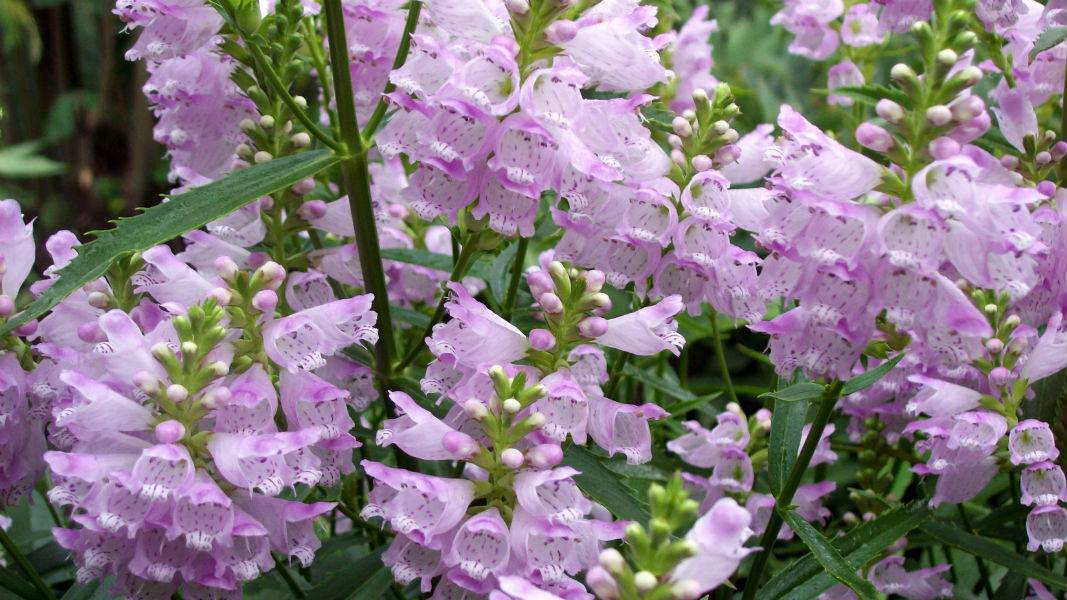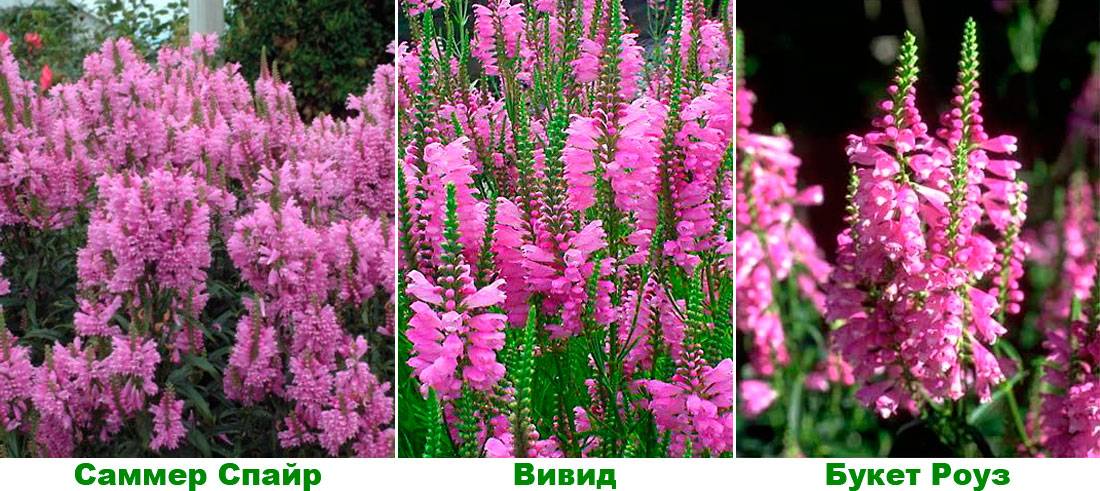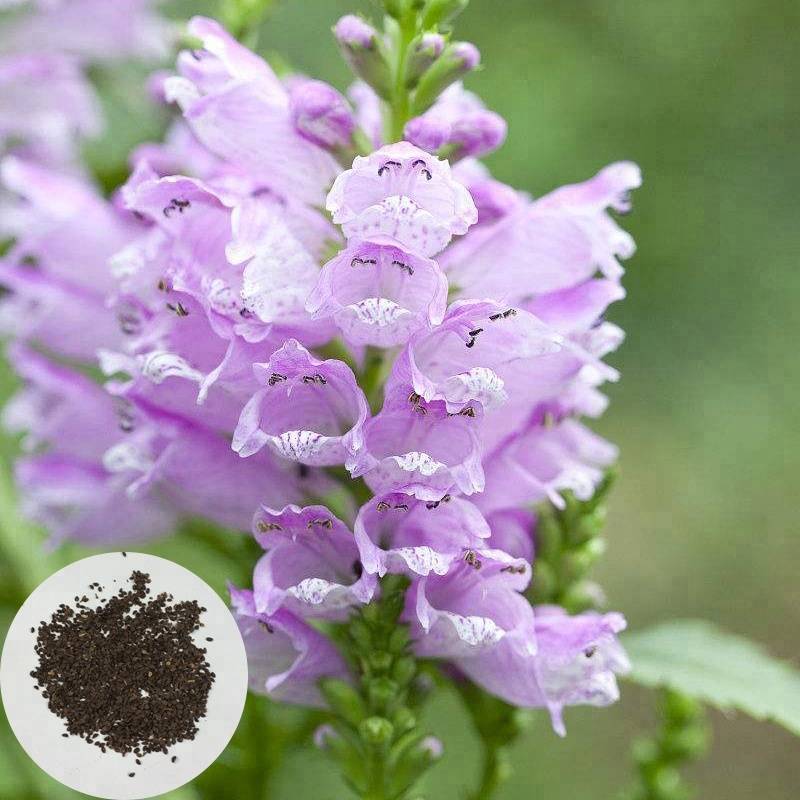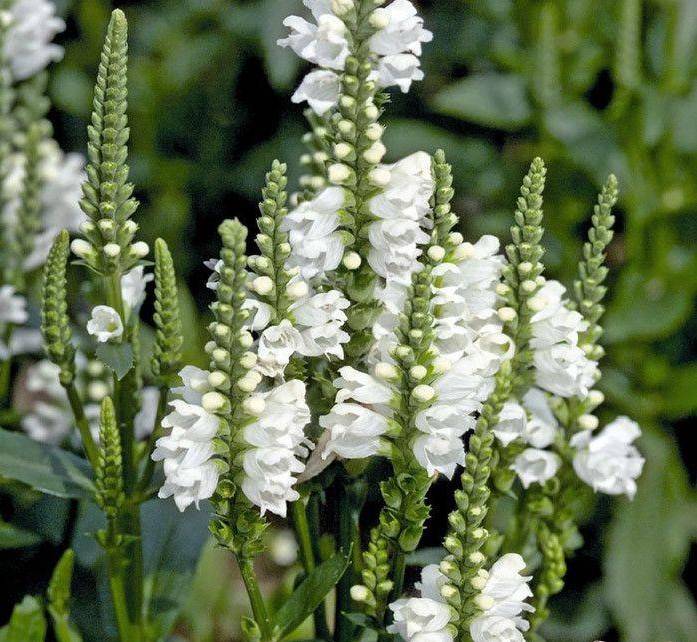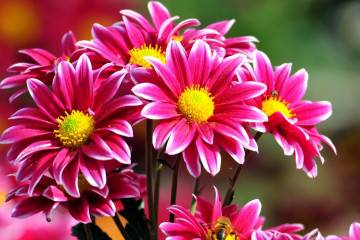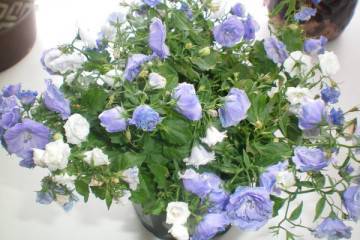Physostegia flower - outdoor care
Content:
A beautiful unpretentious perennial belonging to the Yasnotkov family is called physostegy. North America is considered the birthplace of this plant. Currently, there are about 12 varieties of the flower. At the same time, only Virginia physostegia is grown in ornamental gardens, all other species grow in nature near water bodies or near swamps.
Description of physostegia: varieties and varieties
Physostegia is a fairly noticeable and vibrant plant. Despite the fact that the flower has few varieties, it boasts a variety of colors of its petals.
The plant grows to a height of 1.5 m. Peduncles are long and dozens of buds are formed on them. On a spike-shaped inflorescence, two-lipped, tubular flowers bloom, which begin to bloom mainly from the second half of July. Flowering continues for 50 days. The variety belongs to frost-resistant perennials.
The physostegia flower attracts the attention of pollinators due to its very sweet and alluring aroma.
In landscape conditions, only one type of physostegy is grown - virginian. This flower is distinguished by straight, slightly branched stems, the height of which reaches 1 m. On the stems are rectilinear-lanceolate opposite leaves of a light emerald hue. Flowers are collected in a dense inflorescence and come in the following shades:
- pink;
- snow-white;
- purple;
- lilac;
- purple.
In the garden, only Physostegia Virginia is grown, as well as varieties derived from it.
The most common are the following:
- Alba. The perennial grows up to 1 m in height, blooms with large white flowers. In physostegia Alba, the leaves are smooth in the middle, and serrated along the edges;
- Vivid is a dwarf flower with medium-sized, pale pink flowers and green leaves. In height, these pink physostegias grow only up to 60 cm;
- physostegia variegata is one of the most extraordinary flowers. It can grow up to 1 m in height. Variegata flowers are bright pink, leaves are dark green variegated with a white border in the middle and edges. Many growers for growing in gardens prefer the variegated physostegy;
- Rose bouquet. The flower grows up to 1.5 m in height. The flowers are of an incredibly beautiful bright lilac color of large size. The leaves of Physostegia Rosea are powerful, serrated along the edges of a light green color;
- Crystal Peak White is a variety that has strong erect tetrahedral stems. Crystal Peak White's physical height grows up to 80 cm. The main advantages of this variety are ease of maintenance, frost resistance and drought resistance. Looks great when planted along fences and curbs, as well as in mixed flower beds. This physicosthenia is white;
- Summer Spire. In shape and color, the leaves of this variety are no different from Physostegia virginiana Alba. Only flowers differ, which have an unusually lilac or dark pink color. Flowers of this variety grow up to 90 cm in height.
Planting physostegy
Having made the decision to grow physostegia, planting a plant will not cause difficulties. This perennial is completely not picky about growth factors. But nevertheless, the right place will ensure the lush growth of shoots and long flowering.
In sunny areas, as well as where there is an openwork partial shade, physostegy will feel as comfortable as possible. It is best to plant the plant on the south or southeast side of the garden. Before planting a flower, you must first prepare the soil and add rotted peat or compost to it.
Planting physostegia in open ground
In open ground, the plant is planted in late May or early June. Despite the fact that the flower is not picky, the soil for planting should be prepared in advance. It should be moist, loose and fertilized. Chernozem, sandy loam or loamy soil is best suited for cultivation.
Saplings are planted from each other at a distance of 25 to 30 cm and watered abundantly.
Sowing seeds of physostegy in open ground
Flower seeds are immediately sown in open ground, as they are characterized by increased germination. In addition, the reproduction of the plant can be carried out by self-sowing.
Watering and loosening the soil
Physostegy does not require special and complex care. Watering the plant is required abundantly and regularly. At the same time, moisture stagnation in the soil should not be allowed, since as a result of this, the roots may begin to rot, a fungus will appear, and the plant will die.
Reproduction methods
Flower reproduction is carried out by dividing the bush, cuttings and seeds.
Reproduction in this way is best done in June. Cuttings must be carefully cut, leaving at least three live buds on them. After that, dig them into the boxes with prepared soil for rooting. It will be possible to plant only next spring.
It is best to propagate the flower by dividing the bush in the spring, when the plant is preparing for flowering. This process is considered the most difficult in comparison with all others. First, you need to trim the leaves and stems with inflorescences, and only after that you can start digging out the roots and dividing them. The most optimal time for such reproduction is autumn, as soon as the flowering period ends.
Top dressing and transplanting
According to the description, physical fitness does not need careful and special care. If, when planting the plant, the necessary fertilizers were added to the soil, then during the cultivation process there is no need to make additional fertilizing.
The flower must be transplanted to a new place every five years. When transplanting, the place is organized in the same way as before planting seedlings in the open ground.
Physostegy trimming
Experts recommend regularly pruning this plant. As soon as the flowering period ends, the aerial part of the flower is cut off so that high hemp remains. It is not recommended to cut the shoot under the base, as this will lead to the fact that the next year the flower will become weakened and will not bloom abundantly.
Pests and diseases
Physostegia is a plant resistant to pests and diseases.The only thing that can happen to him is the appearance of a fungus with abundant and frequent watering, as well as if the season is cold and rainy. Treatment of a flower with a fungicide will help to cope with such a problem.
In the absence of watering during the dry season, aphids or spider mites may appear on the plant. Pests can be dealt with with soapy water or special preparations.
How to prepare for wintering
Physostegia is classified as a hardy plant. It is only necessary to make shelters for the winter when growing it in regions where severe frosts prevail. In this case, after pruning, the bushes are covered with humus or peat, and in the spring, on the first warm days, the shelter is removed. Otherwise, the roots may overheat.
Flowering period and care after
The flowering period lasts 35-50 days, depending on the condition of the flower. This happens in July-August. After the plant has faded, seeds are collected from the inflorescences and the stems are pruned.
Use in landscape design
Variegated physostegias, regardless of the variety, look spectacular in group plantings. Experienced flower growers prefer to combine several shades at once when composing compositions. These unique and beautiful flowers can be planted along fences, forming ornamental shrubs, and also framing paths with them. Lupins, lilies, dahlias, phloxes and garden daisies get along well with physostegias in the neighborhood.
Physostegia is rightfully considered a very beautiful flower that fits perfectly into any landscape. In addition, the plant is distinguished by its unpretentiousness, which makes it even more demanded and popular among flower growers. With its help, you can add a zest to any garden and personal plot.
